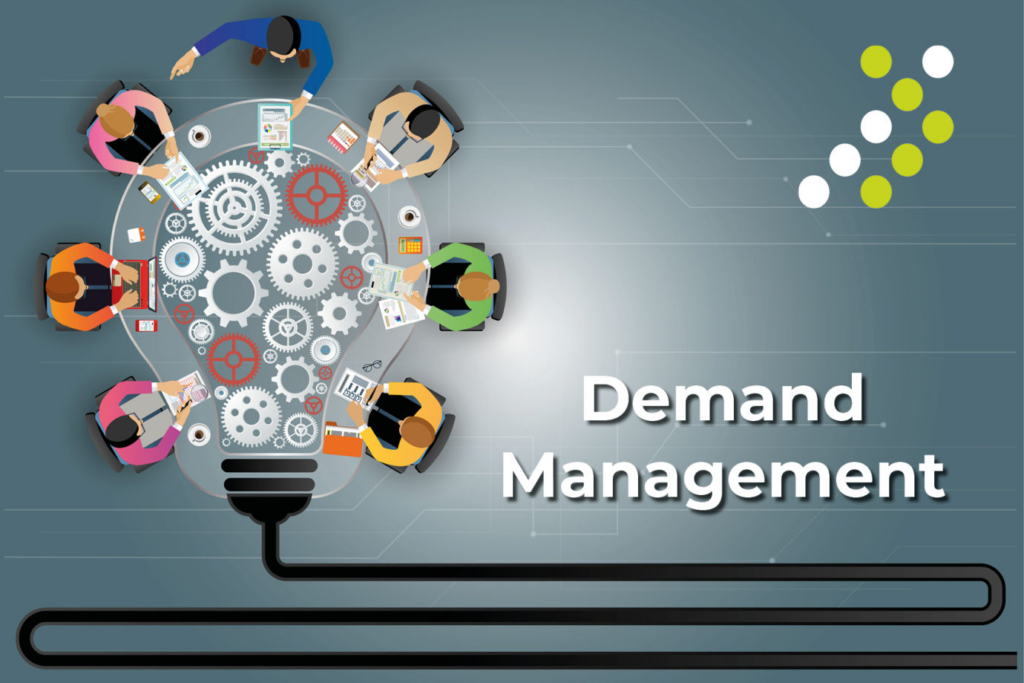
Demand management is a pivotal concept that lies at the core of effective economic planning and business strategies. In this exploration, we delve into the essence of demand management, encompassing its definition, functions, and the multitude of benefits it offers. At its heart, involves controlling and influencing the demand for goods, services, or resources, thereby striking a delicate balance between supply and demand. We uncover the role of demand management in achieving economic stability, controlling inflation, optimizing resource utilization, and promoting sustainable growth. Join us as we unravel the intricacies of demand management, understanding its significance in shaping prosperous economies and driving business success.
What is demand management?

Demand management refers to the process of effectively and efficiently controlling and influencing the demand for goods, services, or resources in an economy or within a specific organization. The primary goal of demand management is to balance the demand and supply of goods and services to ensure optimal utilization of resources, minimize fluctuations, and maintain stability in the market or organization.
Demand management process & strategies

It involves a series of steps aimed at effectively controlling and influencing the demand for goods, services, or resources. These steps can be applied both at the macroeconomic level by governments and at the microeconomic level within businesses.
Here are the five key steps of demand management:
Demand Forecasting
The first step in demand management is demand forecasting. This involves analyzing historical data, market trends, and economic indicators to predict future demand patterns. Governments and businesses use demand forecasting to understand consumer behavior, anticipate changes in demand, and make informed decisions to meet future needs effectively.
Demand Planning
Based on demand forecasts, the next step is demand planning. Governments and businesses formulate demand plans that outline how they will address expected demand levels. This includes setting production targets, inventory levels, and resource allocation to meet consumer requirements efficiently.
Demand Influencing Strategies
Demand management employs various strategies to influence consumer behavior and aggregate demand. These strategies can be implemented at both macroeconomic and microeconomic levels:
Monetary Policy: At the macroeconomic level, central banks use interest rates and open market operations to influence borrowing and spending behavior. Lower interest rates can stimulate consumer spending and business investments, while higher rates can curb excessive borrowing and spending.
Fiscal Policy: Governments use fiscal tools, such as taxation and government spending, to influence demand. During economic downturns, increased government spending can stimulate demand, while during inflationary periods, higher taxes may help control excessive spending.
Supply-Side Policies: Governments and businesses can implement supply-side policies to boost productivity and increase the capacity of an economy to meet demand. Investing in infrastructure, education, and technology can lead to higher production levels and increased competitiveness.
Marketing and Pricing Strategies: At the microeconomic level, businesses can use marketing and pricing strategies to influence consumer demand. Effective marketing campaigns, targeted promotions, and competitive pricing can attract customers and drive demand for specific products or services.
Demand Monitoring and Adjustment
The demand management process involves continuous monitoring of actual demand against forecasts. Governments and businesses need to be agile and responsive to changes in demand conditions. This allows them to make real-time adjustments to their strategies, ensuring they can meet consumer needs and market dynamics effectively.
Collaboration and Coordination
Effective demand management often requires collaboration and coordination among various stakeholders. At the macroeconomic level, governments, central banks, and international institutions must work together to implement consistent and complementary demand management policies. At the microeconomic level, businesses must collaborate with suppliers, distributors, and retailers to ensure a smooth flow of goods and responsiveness to demand fluctuations.
By following these five steps, it can achieve a balanced and efficient allocation of resources, promote economic stability, and contribute to sustainable growth both at the macroeconomic and microeconomic levels.
Why you need demand management

offers a wide array of benefits that significantly impact economies, businesses, and consumers alike. Let’s explore five key advantages of demand management in detail:
Economic Stability and Growth
It plays a vital role in maintaining economic stability and fostering sustainable growth. By influencing aggregate demand through monetary and fiscal policies, governments can control inflation and avoid severe economic fluctuations. In times of economic downturn, demand management measures, such as increased public spending and lower interest rates, can stimulate demand, leading to increased production and job creation. On the other hand, during periods of rapid economic expansion, helps prevent overheating, reducing the risk of asset bubbles and subsequent market crashes. These measures contribute to a more balanced and resilient economy, promoting steady growth over the long term.
Inflation Control
Controlling inflation is a critical objective of demand management. When demand outpaces supply, prices rise, leading to inflationary pressures. By employing tools like interest rates, central banks can manage borrowing and spending behavior, thus influencing the overall demand in the economy. Higher interest rates can discourage borrowing and spending, reducing inflationary pressures, while lower interest rates can encourage borrowing and investment, stimulating economic activity. Through these measures, demand management aims to keep inflation within a target range, ensuring price stability and safeguarding the purchasing power of consumers.
Resource Utilization and Sustainability
Demand management promotes efficient resource utilization and sustainable practices. By aligning demand with available resources, it reduces wastage and overconsumption. In an era of increasing environmental concerns, optimizing resource utilization is crucial for fostering sustainable development. For instance, by curbing excessive energy consumption during peak hours, It helps prevent energy shortages and reduces greenhouse gas emissions. Similarly, in water-scarce regions, demand management measures can encourage water conservation, ensuring the responsible use of this finite resource. These practices not only benefit the environment but also enhance the long-term viability of industries and businesses.
Stabilizing Employment and Reducing Unemployment:
It has a direct impact on employment levels. When demand is high, businesses expand their production to meet increased consumer demand, resulting in more job opportunities. In contrast, during economic downturns, demand management measures can help mitigate unemployment by stimulating economic activity and encouraging hiring. Maintaining stable employment levels is crucial for social well-being and reducing income inequality. By supporting job creation, demand management contributes to a more inclusive and prosperous society.
Business Planning and Performance
Effective demand management is instrumental for businesses to thrive in a dynamic and competitive market landscape. Understanding and anticipating customer demand through demand forecasting allows companies to develop robust demand plans. By aligning production, inventory, and marketing strategies with expected demand, businesses can optimize their operations and resources. This leads to reduced inventory carrying costs, minimized stockouts, and improved overall efficiency. it enables businesses to adjust pricing strategies and marketing efforts based on customer preferences, driving higher customer satisfaction and brand loyalty.
In conclusion, brings numerous benefits to economies, businesses, and consumers alike. From promoting economic stability and sustainable growth to controlling inflation, optimizing resource utilization, stabilizing employment, and enhancing business performance, demand management is a vital tool for achieving a balanced and prosperous economic environment. Policymakers and businesses must continue to prioritize demand management strategies to reap these advantages and create a more resilient and sustainable future.